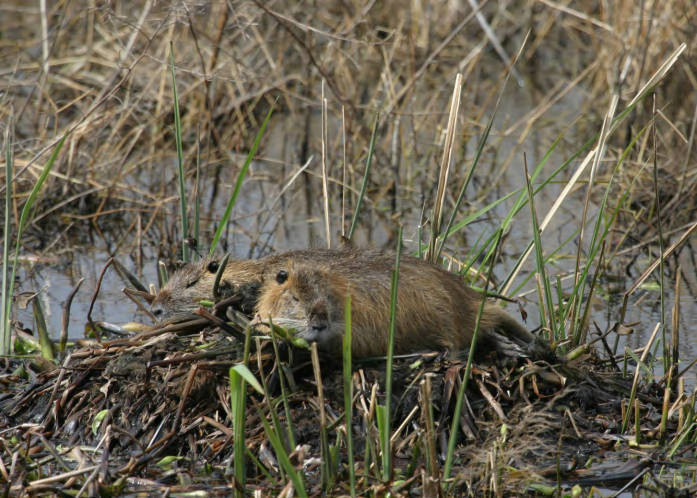
nutria have escaped from commercial fur farms and are a threat to Virginia's marshes
Source: US Fish and Wildlife Service, Nutria

nutria have escaped from commercial fur farms and are a threat to Virginia's marshes
Source: US Fish and Wildlife Service, Nutria
Nutria (Myocastor coypus) are nocturnal rodents weighing up to 20 pounds that thrive in marshes. They are native to South America, not to Virginia. Nutria were originally introduced into Louisiana by commercial fur farmers in 1899. Farmers on the Delmarva Peninsula released thousands of animals in the mid-1900's, when fur farming became no longer economically viable.
On the western side of the Chesapeake Bay, nutria migrated north of the North Carolina border after World War II. After 50 years, they have finally extended their range beyond the blackwater swamps in the Coastal Plain to the Chickahominy River.
Nutria have a high reproductive rate, producing up to three litters annually. Nutria are outcompeting native muskrats, and destroy entire plants when feeding rather than harvest just a portion like other grazing animals. By digging up the roots, nutria destroy marshes and trigger conversion to open water habitat.
Wildlife managers in Virginia consider nutria to be a serious threat to coastal wetlands:1

orange teeth are a clue to identifying nutria vs. beaver or muskrat
Source: Chesapeake Bay Nutria Eradication Program (CBNEP), How do I Identify a Nutria?
Nutria were introduced into the Blackwater National Wildlife Refuge in Maryland in the 1940's. The Chesapeake Bay Nutria Eradication Project required 20 years and $27 million to eliminate 14,000 of them from the Delmarva Peninsula. That extirpated the invasive mammals from the eastern side of the Chesapeake Bay, but nutria are still present on the western side.2
Nutria expanded their range from North Carolina into Virginia after World War II. By 2021, nutria had reached the Chickahominy River and were poised to expand further north. The invasive animals are expected to thrive in Coastal Plain rivers. Excessive amounts of emergent vegetation in Tidewater marshes will be uprooted and mudflats will be left unprotected by roots. If phragmites does not quickly cover a new mudflat, then currents and storms will wash away the soil and convert former marshland into open water habitat.
The threat and the Department of Wildlife Resources response was described by a biologist:3
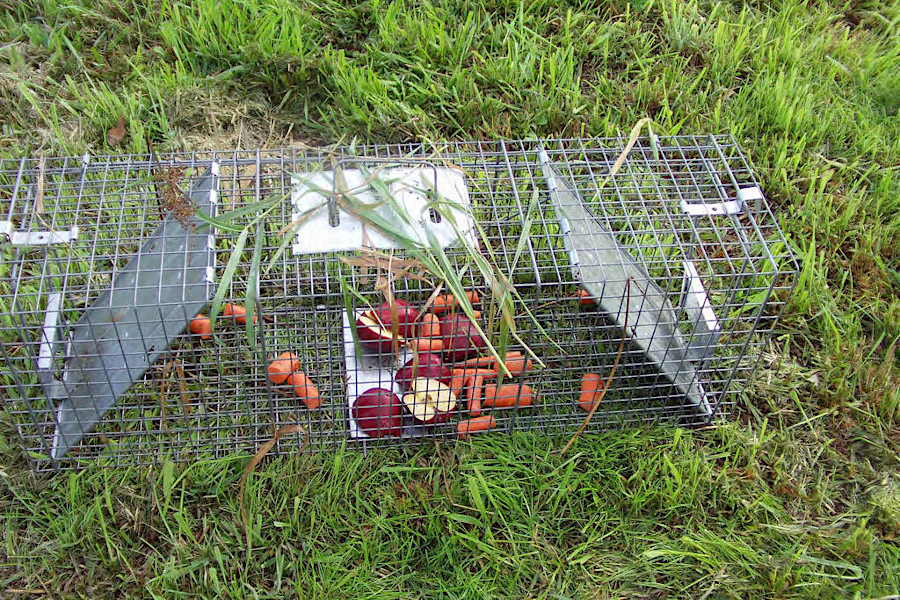

traps were baited with carrots and apples to capture nutria in an attempt to prevent their spread north of the Chickahominy River
Source: US Fish and Wildlife Service, Baited trap used to capture nutria and Caged Nutria

by 2024, nutria had expanded north of the Chickahominy River and west into the Piedmont drainages of the Blackwater and Roanoke rivers
Source: Chesapeake Bay Nutria Eradication Program (CBNEP), Nutria Range in Virginia Continues to Expand
Marshes with natural vegetation are more ecologically valuable than mudflats with phragmites or open water. To maintain wetland habitat, the Department of Wildlife Resources has a program to capture and kill nutria north of the James River. Biologists place wires on nutria detection platforms in marshes. Fur is caught by the wires, identifying that nutria are present. The biologists also take "conservation dogs" on boats into the wetlands to smell where nutria are present. The detection processes determine where traps will be set.4
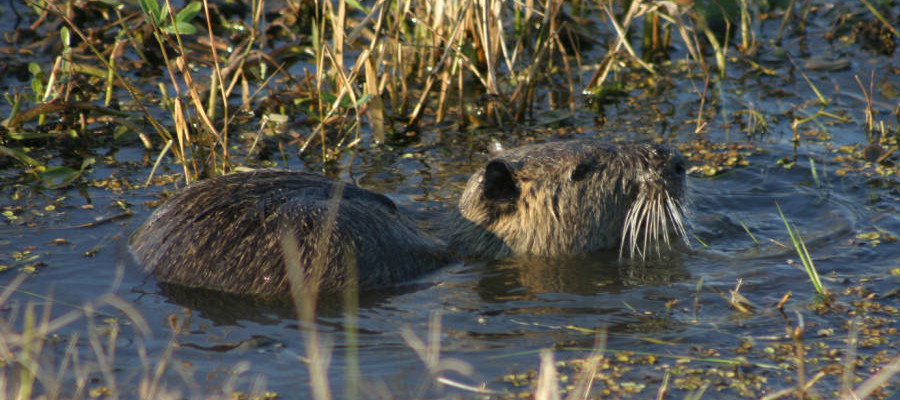
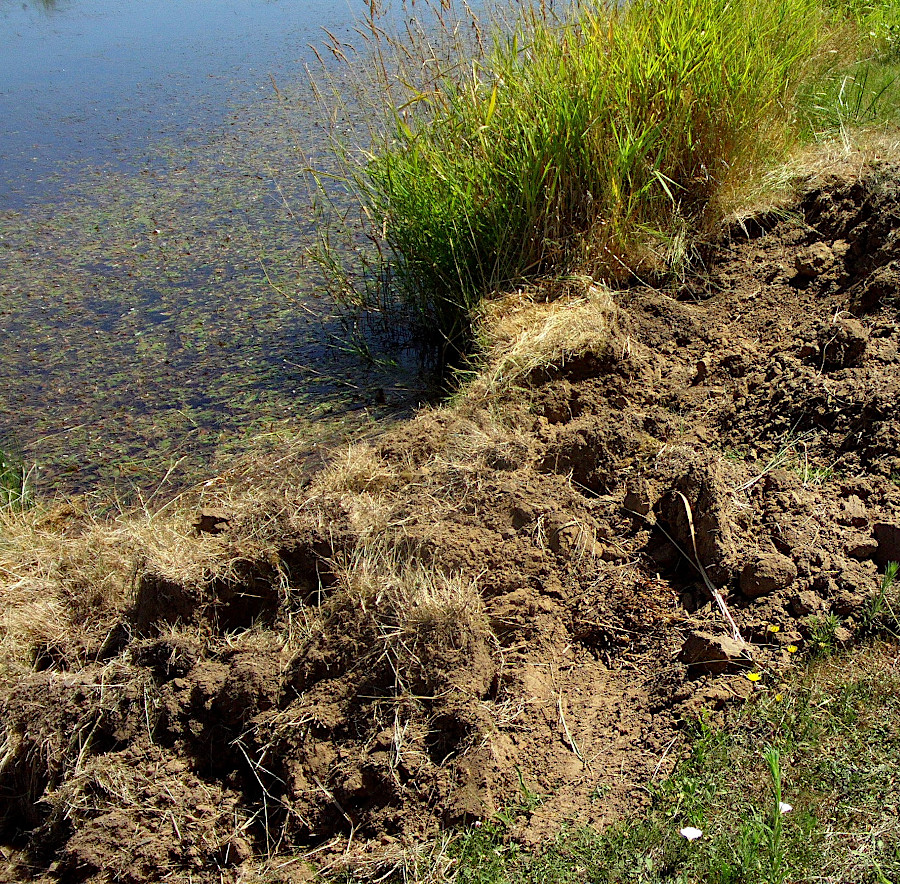
nutria eat so many roots that they trigger erosion which converts marshes into open water habitat
Source: US Fish and Wildlife Service, Nutria in water and Nutria damage
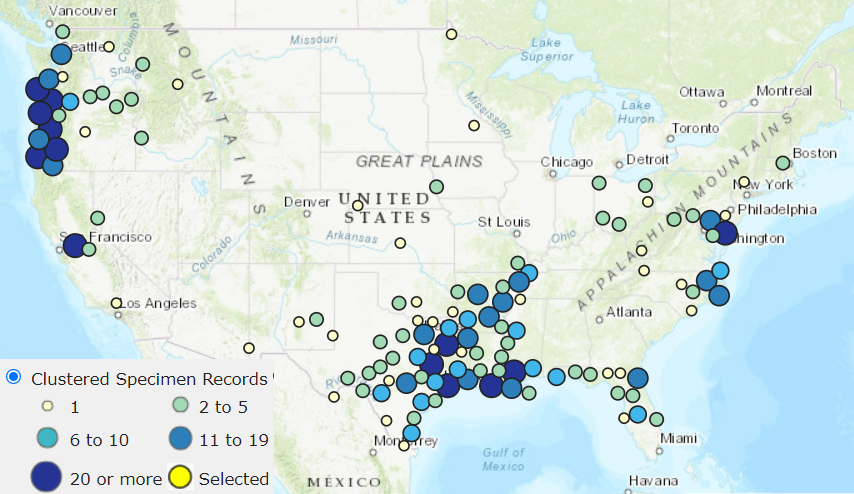
nutria have expanded their range into multiple states
Source: US Geological Survey (USGS), NAS - Nonindigenous Aquatic Species
Source: Discover, Nutria Hunted to Save Wetlands

dogs smell the presence of nutria, helping biologists to determine where to set traps
Source: Virginia Department of Wildlife Resources, Menace of the Marsh